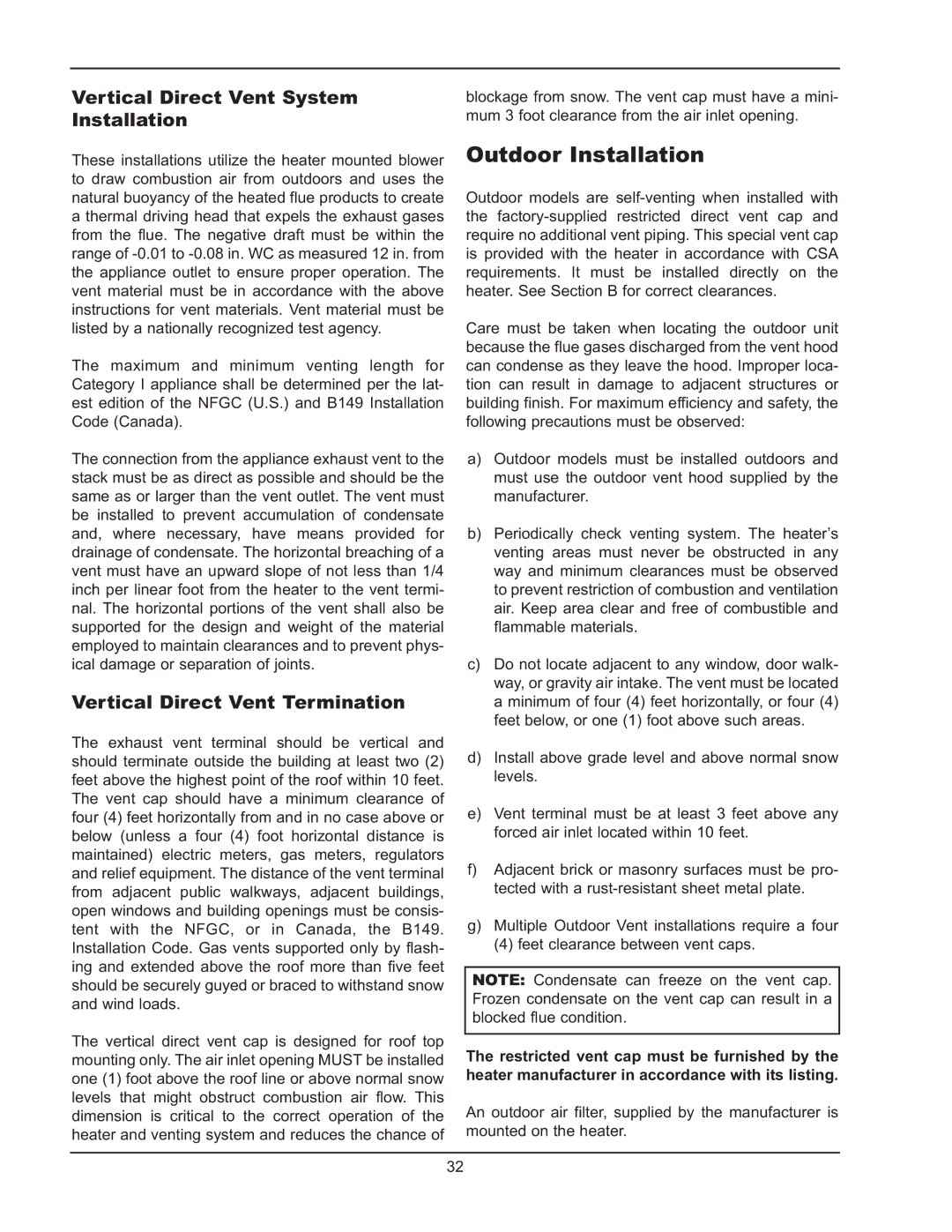122-322 specifications
Raypak 122-322 is a cutting-edge pool and spa heater designed for optimal performance and efficiency. Known for its robust construction and reliable heating capabilities, this heater has become a preferred choice among pool owners.One of the standout features of the Raypak 122-322 is its advanced copper fin tube heat exchanger. This innovative technology enhances the heater's efficiency by maximizing heat transfer while minimizing energy consumption. By efficiently circulating the water through the heat exchanger, the Raypak 122-322 quickly raises the temperature, allowing for an enjoyable swimming experience regardless of the weather.
The heater is equipped with a digital control system that allows for precise temperature adjustments. This user-friendly interface makes it easy to set and maintain the desired water temperature, promoting user convenience. The digital controls also provide diagnostic features, which simplify troubleshooting and maintenance, ensuring the heater operates smoothly for years to come.
Safety is a crucial aspect of the Raypak 122-322. It comes with a series of safety features, including a flame rollout switch, high limit switch, and a pressure switch that ensures the unit operates safely under various conditions. This focus on safety provides peace of mind for users, knowing that their heating system is designed with protective measures in place.
The Raypak 122-322 is environmentally friendly, designed to use less energy compared to conventional heating systems. Its efficient performance not only reduces operational costs but also lessens the overall environmental impact, making it a responsible choice for conscious consumers.
With a compact design, the Raypak 122-322 can fit easily into various installation spaces, making it versatile for numerous residential or commercial settings. Additionally, the unit is built with durable materials resistant to corrosion and weather conditions, ensuring longevity and minimal maintenance requirements.
Overall, the Raypak 122-322 stands out in the market due to its advanced features, safety mechanisms, energy efficiency, and ease of use. It exemplifies a perfect blend of innovation and reliability, making it an exceptional option for anyone looking to enhance their pool or spa experience.

